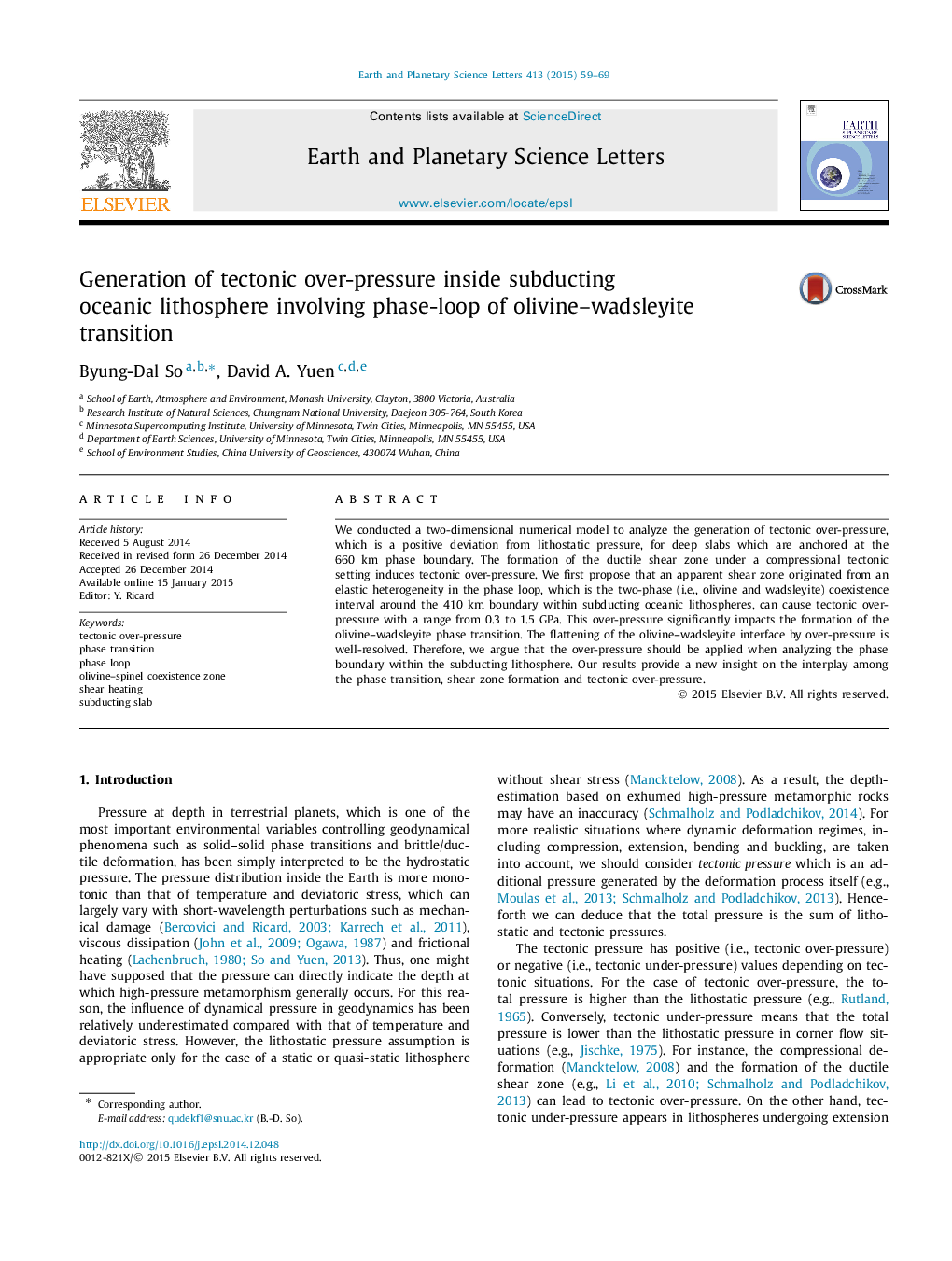| Article ID | Journal | Published Year | Pages | File Type |
|---|---|---|---|---|
| 6428593 | Earth and Planetary Science Letters | 2015 | 11 Pages |
â¢We conducted numerical modeling to analyze generation of tectonic over-pressure.â¢The formation of the shear zone under a compression induces tectonic over-pressure.â¢The shear zone formation can cause tectonic over-pressure (from 0.3 to 1.5 GPa).â¢The over-pressure should be applied when analyzing phase boundary in the slab.
We conducted a two-dimensional numerical model to analyze the generation of tectonic over-pressure, which is a positive deviation from lithostatic pressure, for deep slabs which are anchored at the 660 km phase boundary. The formation of the ductile shear zone under a compressional tectonic setting induces tectonic over-pressure. We first propose that an apparent shear zone originated from an elastic heterogeneity in the phase loop, which is the two-phase (i.e., olivine and wadsleyite) coexistence interval around the 410 km boundary within subducting oceanic lithospheres, can cause tectonic over-pressure with a range from 0.3 to 1.5 GPa. This over-pressure significantly impacts the formation of the olivine-wadsleyite phase transition. The flattening of the olivine-wadsleyite interface by over-pressure is well-resolved. Therefore, we argue that the over-pressure should be applied when analyzing the phase boundary within the subducting lithosphere. Our results provide a new insight on the interplay among the phase transition, shear zone formation and tectonic over-pressure.
